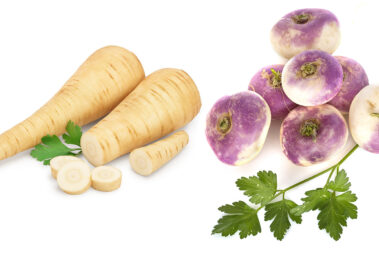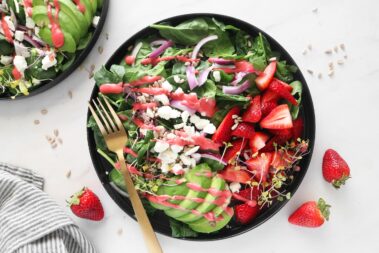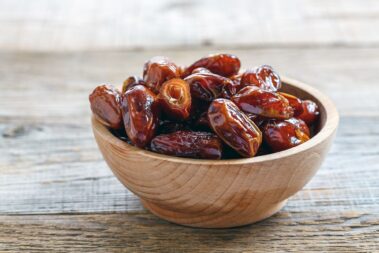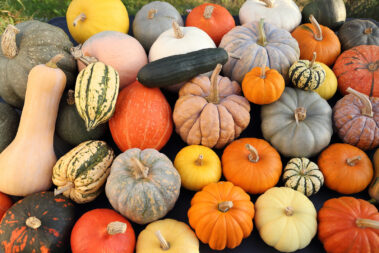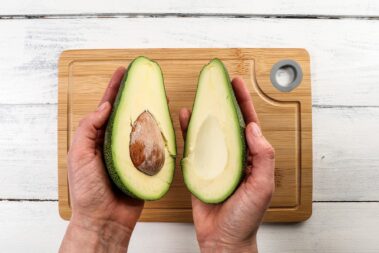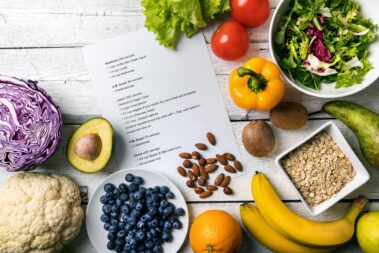Pumpkin spice latte, pumpkin soup, and Jack-o-lanterns. From labor day to Black Friday, the pumpkin is king.
But how much do you know about this favorite fall fixture? Most people aren’t even sure what a pumpkin is…
Table of Contents
So, Is Pumpkin a Vegetable or a Fruit?
Pumpkin is technically a fruit. Fruits are the part of the plant that develops from the flower and bare seeds. But speaking in culinary terms, pumpkins are vegetables because they’re not overly sweet and are prepared most often for savory dishes like soups and stews.
But the argument over what a pumpkin is doesn’t stop there. Keep reading to find out what kind of fruit pumpkin is, when it is considered a vegetable, and what kind of veggie it is. Plus, we’ll tell you why you should eat more of this food, regardless of what type of food you think it is.
What Kind of Fruit Are Pumpkins?
Now that you know that pumpkins are technically a fruit, you may be wondering, what kind of fruit is a pumpkin?
The answer, surprisingly, is a berry.
Technically defined, a berry is any fruit without a true pit that forms from a single flower with a single ovary. Grapes, blueberries, tomatoes, peppers, eggplants, and squashes are all true berries. Avocados are also berries, oddly enough, because the seed in the center isn’t a true pit.
Think that’s confusing? Try this: strawberries, raspberries, and blackberries aren’t actually berries at all!
Why Is Pumpkin Sometimes Considered a Vegetable?
Want to get really technical? The term “vegetable” doesn’t actually exist in botany. This means “vegetable vs. fruit,” in terms of botanical classification, is not a valid argument. The only time you can argue whether a pumpkin is a vegetable or a fruit is in the kitchen.
The term vegetable comes from the culinary world. It refers to any part of a plant that has a low sugar content and is used in savory dishes. Pumpkin is a squash (or gourd) and squash, traditionally, is used in savory dishes like soups, stir-fries, and pasta.
While pumpkin pie, the most famous of all pumpkin dishes, is sweet, no one considers it a “fruit pie.”
Pumpkin may be considered a fruit in the botanical sense, but it is a vegetable in every other sense.
Is a Pumpkin a Starch?
When it comes to vegetables, there are several categories different plant parts can fall into.
There are greens like spinach and lettuce, starches like potatoes, and beans like peas and pintos. But what category does pumpkin fall into?
Many people think pumpkin is a starch because it’s so fleshy. But compared to a true starch like potatoes, pumpkin has quite a bit less starch. When you remove the water, a potato is about 78% starch, while a pumpkin is only about 42% starch. This is true for pie pumpkins while other varieties of pumpkin, such as field, tend to have even less starch and more fiber.
The best veggie category for pumpkin would be among its fellow squashes in the cucurbitaceae family.
This group includes other medium-starchy vegetables like winter squash, summer squash, and cucumbers. All of these unique fruit-vegetables are part of the Cucurbita genus.

The Health Benefits of Pumpkins
Regardless of what kind of food you classify pumpkins as, one thing is certain, they have many health benefits.
For one, pumpkins are a great source of fiber. Dietary fiber is an important factor in helping people lose weight, lower blood pressure, and supporting overall heart health. Eating foods with a high fiber content can also help you feel fuller after meals and prevent unhealthy snacking.
Orange squashes, like pumpkins, are also loaded with beta carotene. This antioxidant helps support immune health, eye health, and reproductive health.
This undeniably healthy food can even help ward off cancer. It is loaded with vitamin A, which has been scientifically proven to help fight prostate and lung cancer. All that dietary fiber in pumpkin can also help fight cancer by promoting a healthy probiotic load in the gut which translates to a healthier immune system that’s better able to attack cancer cells.
The range of health benefits offered by pumpkin doesn’t stop at its orange flesh.
Pumpkin seeds are also especially nutritious and are loaded with protein and unsaturated fatty acids. Eating pumpkin seeds has been shown to help fight certain types of cancer and reduce the risks of chronic disease.
Pumpkins, like many fruits in the gourd family, are also a rich source of minerals, including magnesium.
FAQ
What type of food is pumpkin?
While technically a fruit in the scientific sense, pumpkins are vegetables in the food sense. More specifically, they are cucurbit veggies, like squash and cucumbers.
Is pumpkin legally a vegetable?
The USDA classifies pumpkins (Cucurbita maxima), as vegetables in the crop group.
What other fruits are considered vegetables?
Any fruit that isn’t too sweet is likely to be considered a vegetable in the culinary sense. Some of the best examples include avocados, cucumbers, peppers, and tomatoes.
Are there any vegetables that are considered fruits?
The closest thing to a true vegetable (non-seed bearing part of the plant) that might be considered a fruit in the kitchen is rhubarb. The only edible parts of this plant are the leaf stems. They have a sour flavor that is most often paired with sugar to make sweet dishes, including pies, pastries, and sweet drinks.
Our Favorite Pumpkin Recipes
Whether you want to call it a fruit or a vegetable, the fact remains that pumpkins make a tasty addition to many meals. Here are a few of our favorite pumpkin-centric recipes.
- Vegan Pumpkin Chili – Hearty, filling, and perfect for any autumn evening.
- Vegan Oatmeal Pumpkin Bars – A great way to start your morning.
- Creamy Pumpkin Soup – Easy to make and easier to enjoy.
- Vegan Pumpkin Cream Cheese Muffins – Pumpkin spice and vegan cream cheese, what could be better?
- Vegan Pumpkin Pie – So good you’d never guess it was plant-based.
Need more pumpkin goodness? Check out these 23 pumpkin recipes.
And if you want more vegan recipe recommendations, be sure to sign up for our newsletter.
The Bottom Line on Pumpkin
In the botanical sense, pumpkins are fruits because they are produced by the reproductive body of the plant. But in the kitchen, this most popular type of squash falls into the vegetable category.
And, no matter what you call it, the king of fall foods is packed with health benefits and worth including in your meals whenever you get the chance.
What is your favorite way to use pumpkin in the kitchen? Let us know in the comments section.
And don’t forget to check out our featured pumpkin recipe, Pumpkin Fruit Dip, below.
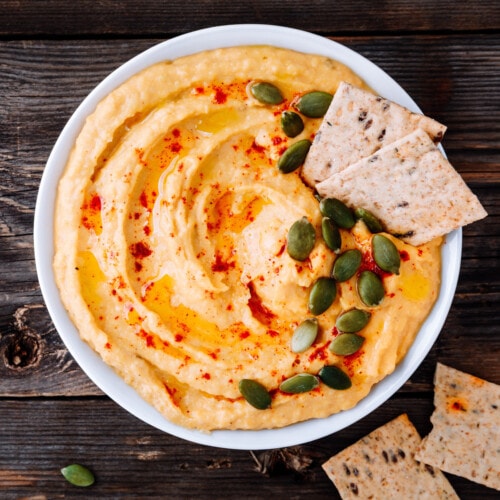
Pumpkin Fruit Dip
Ingredients
- 15 ounces pumpkin puree
- 1 cup vegan cream cheese about 8 ounces
- 2 to 3 tablespoons maple syrup or brown sugar
- 1 ½ teaspoons ground cinnamon
- ½ teaspoon ground ginger
- ½ teaspoon allspice
- ⅛ teaspoon nutmeg
- 1 teaspoon vanilla extract
Instructions
- Add all the ingredients to a food process or blender.
- Blend until combined, scraping down the sides as needed. Taste and add more spices or sweetener if necessary.
- Serve with sliced apples or your favorite fruit.
Nutrition
- How to Pick the Perfect Watermelon For a Sweet Summer Treat - April 10, 2024
- Future Kind’s Foundations: A Multivitamin Made for Vegans - December 5, 2023
- Does Nutritional Yeast Go Bad? - November 28, 2023



